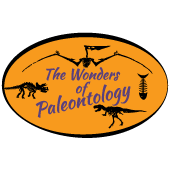This is a new section- Please check-in and see what is added to the bottom of this page;)
How Many Dinosaurs Do You Know?
Here is an extensive list from A-Z. https://www.thoughtco.com/dinosaurs-a-to-z-1093748
Learn about The Dinosaurs of Texas
https://tpwd.texas.gov/publications/pwdpubs/media/pwd_bk_p4502_0094n.pdf
Carnivores:
Tyrannosaurus rex “King Tyrant Lizard”
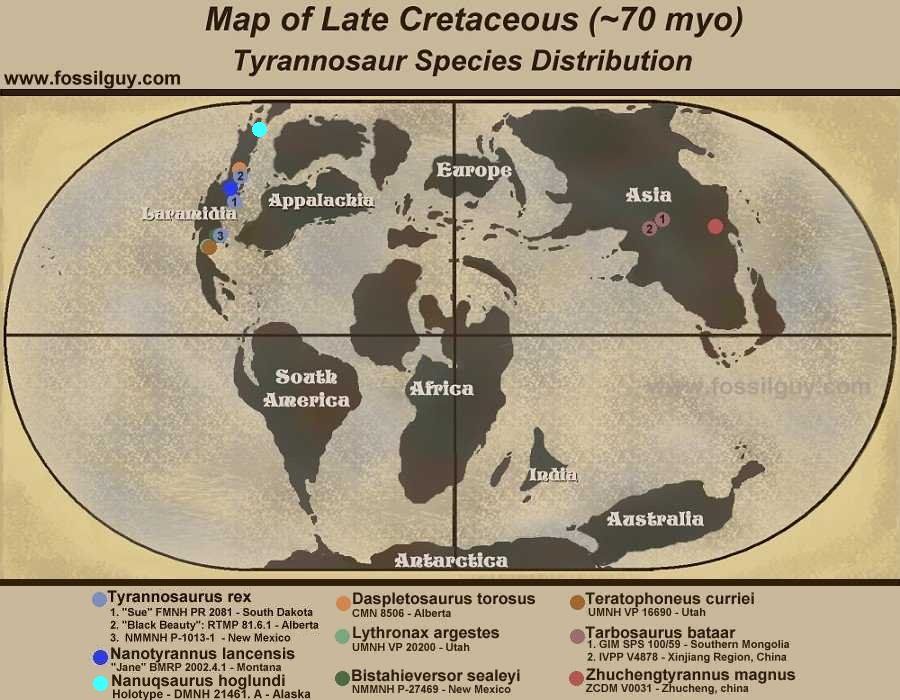
The eastern island was Appalachia.
The Western Interior Seaway was the waterway between each island.
by Jayson Kowinsky– the Fossilguy.com
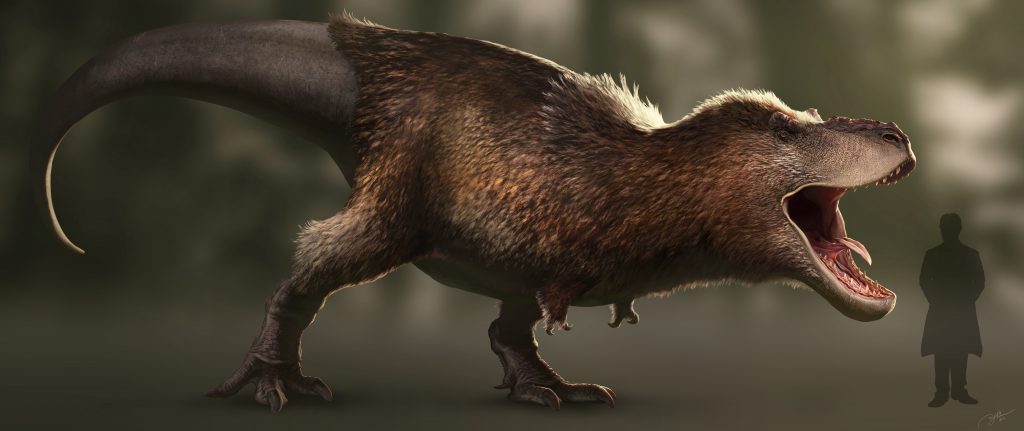
By RJPalmerArt
Wikimedia Commons
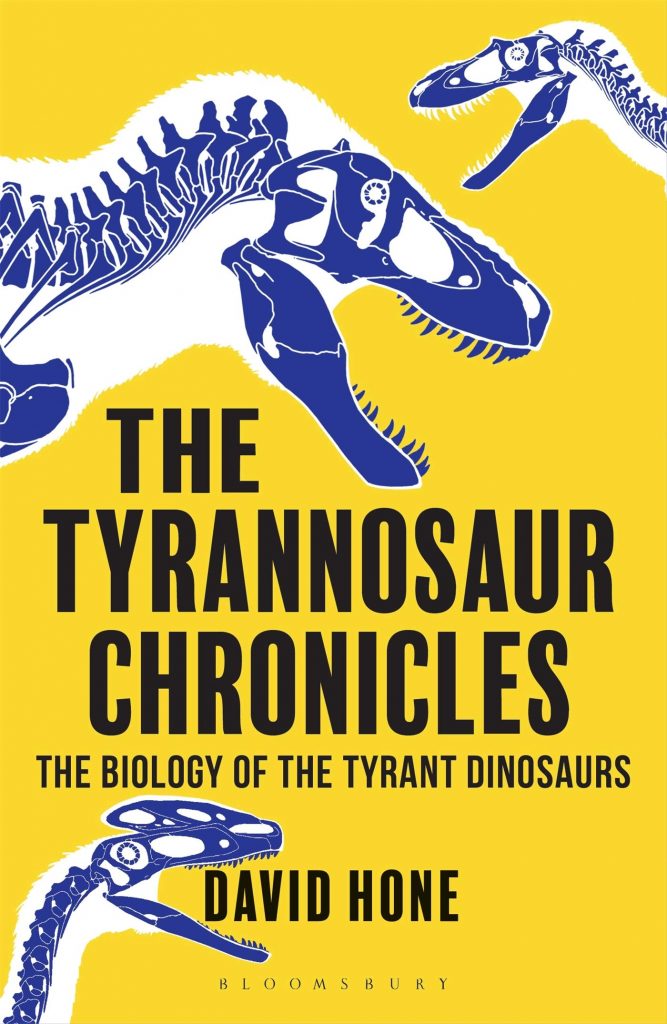
According to Dr. David Hone’s book The Tyrannosaurus Chronicles- The Biology of the Tyrant Dinosaurs, here are some of the basics about Tyrannosaurus and its relatives- the tyrannosauroids:
*Tyrannosaurus rex had feathers.
* It was a predator and a scavenger.
*Had colossal bite power.
* Was a long-distance sprint runner that could hold its speed for a long time.
* Had 4 toes– Three toes in the front and a dew-claw-like toe in the back. The front toes had an archometatarsalian condition in which “the middle long bone in the foot is pinched at the upper end and flares out at the base” creating a triangular-shaped foot that was very strong and agile.
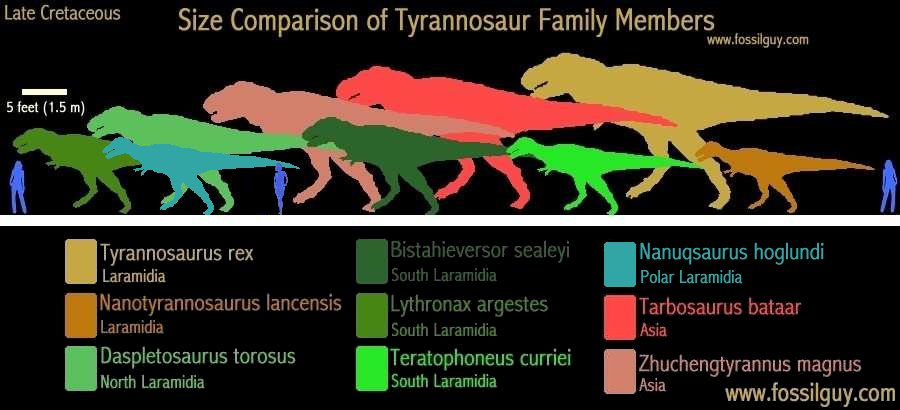
by Jayson Kowinsky– the Fossilguy.com-(check out his website!)
“Scotty”- Largest, Heaviest, and Oldest T. rex So Far
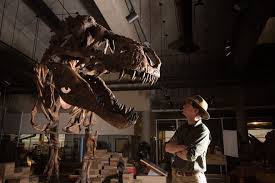
Scotty is almost 43 feet (13 meters) long and in life probably weighed 19,555 lbs. (8,870 kg)- the heaviest T. rex found in North America so far. He was discovered in the Frenchman River Valley in 1991 in Saskatchewan, Canada and it took over two decades to remove the stone matrix around this fossil.
“Scotty” is also the oldest T. rex found so far. Histology is the science used to find out how old a fossil bone is by sawing into the bone and viewing the growth patterns inside. This T. rex lived bout 28 years and from the evidence of his injuries, he had broken ribs, an infected jaw, and a bite on his tail that looked like it came from another tyrannosauroid. Was this a predator or a scavenger?
University of Alberta paleontologists- Drs. W. Scott Persons (above), Phillip J. Currie, and Gregory Erikson upon measurements of the skull, limbs, and hips determined that this dinosaur was “an extremely large and relatively complete (roughly 65%) skeleton of Tyrannosaurus rex (RSM P2523.8).” Lead author Dr. Persons stated, “This is the rex of rexes.”
“Scotty” was named after the bottle of scotch the discoverers used to celebrate the finding of this behemoth, but you cannot miss the fact that the lead author was also a “Scotty”.
This enormous Tyrannosaurus rex‘s restoration was completed in 2014 and is on display at the Royal Saskatchewan Museum in Regina, Saskatchewan.
“Sue”- The Most Complete T. rex So Far
“Sue” also known as FMNR PR 2081 was named after paleontologist Sue Hendrikson although its gender is still unknown. Dr. Sue discovered a few large vertebrae sticking out of a hillside on the Cheyenne River Indian Reservation in South Dakota on August 12, 1990. She figured there might be more dinosaur in the rocks and soon discovered there was. A team of 6 people dug for 17 days to extract 250 of the 380 known T. rex skeletal bones. This enormous dinosaur was the largest Tyrannosaurus rex ever found until “Scotty” was discovered, she is now considered The Most Complete T. rex with 90% of her bones recovered.
“Sue” was 40 feet long and 13 feet high at the hip. According to the growth rings in her bones, she was about 28 years old when she passed. The rings also showed that she had an adolescent growth spurt in which she gained about 4.5 pounds per day and was fully grown at the age of 19 years.
“Sue” was very controversial because various parties claimed ownership of the specimen. The fossils were seized by the FBI on May 14, 1992, and stored until they were auctioned off for $8.3 million dollars in October of 1997 to the Field Museum of Natural History in Chicago, Illinois. She has been on display since 2000 and recently has a brand new home in the Griffen Halls of Evolving Planet.
Spinosaurus “spine lizard”aegypticus–
The largest carnivore ever!
Spinosaurus aegyptiacus
| Ancient Environment: A swamp in a vast river system that covered Morocco & Egypt |
| Facts: * Highly Semiaquatic *Length: 49-52 ft (15-16 m) and still growing *Weight: 7 tons *Large 6 ft (1.8 m) sail on back *Giant bony paddle tail with long extensions on caudal (tail) vertebrae *Tail moved like a crocodile in the water *Elongated croc-like skull *High bone density for better buoyancy *6-7 needle-like teeth in front/ 12 larger conical non-serrated teeth behind that on each side of the mouth *Slender torso *Legs short in proportion to body *Possible webbed feet * 3 fingered hand with enlarged claw on first digit Formations: Kem Kem Beds & Baharîje What It Ate: *Oncopristis- large sawfish *Sharks *Car-sized Fish like coelacanths and lungfish *Carcasses What Ate It? Possibly a pair of Sarcosuchus-had amazing bite force in comparison, but with size alone not a contender. Time Span: 112 - 93.5 Ma Cretaceous Fossils (Location): *About 30 caudal (tail) vertebrates from one individual *Foot bones (Morocco) *Partial skeleton (Egypt) *Teeth at both site |
Carcharodontosaurus “sharp/ jagged toothed lizard”
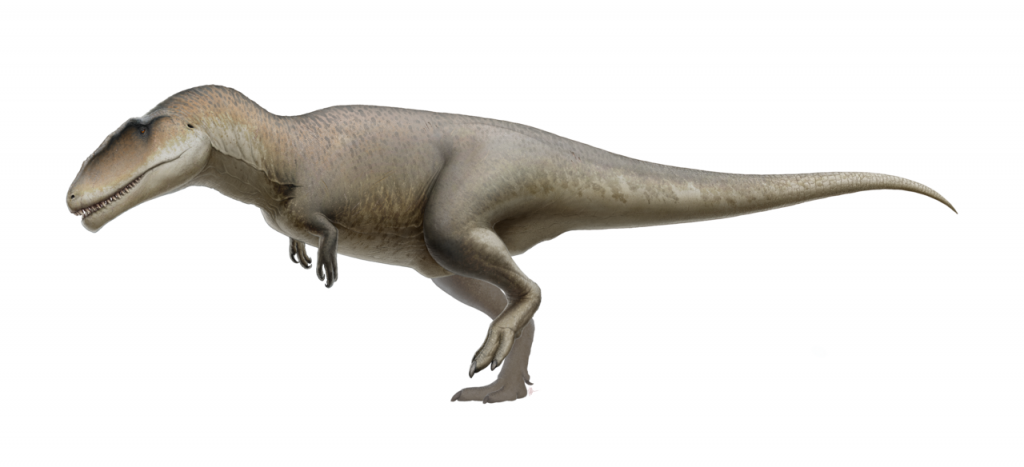
Carcharodontosaurus saharicus aka Megalosaurus
| Ancient Environment: Warm, humid river and lake systems on a flat elevation. |
| Facts: *Evolved from Early therapods like Allosaurus *Predator and scavenger *Length:39-44 ft (12-13.5 m) *Height :11.5- 13 ft (3.5-4 m) at hip. *Weight: 7.2-8.8 tons (6.5-8 tonnes) 14,400- 17,600 lbs. *Skull length:5.3 ft (1.6 m) *Teeth- resembled Great White Shark- About 60 serrated, flattened,8in(20 cm)long *Long, muscular legs- could run 20 mph (32 kph) *Keen hearing and smell senses *Eyes on sides of head like prey not a predator *Brain shape and inner ear anatomy like a crocodile *Traveled in packs Formations: Continental Intercalaire Fm of Algeria, Niger & Tunisia Bahariya and Mut Fms of Egypt. Aoufous and Kem Kem of Morocco. Echkar and Elrhaz of Niger. Chenini of Tunisia. What It Ate: *Paralititan- a sauropod *Ouranosaurus- hadrosaur (duck-billed) with a small sail on its back What Ate It? *Spinosaurus *Sarcosuchus- a crocodile weighing 7,700 – 9,500 lbs. Timeline: 105-94 Ma Fossils Found: *Partial skull *Nearly complete skull *Hip and Hindlimb bones *Vertebrae *Teeth Cretaceous |
Herbivores:

Sauropods “Lizard foot”
The name sauropod was named by Yale paleontologist Othneil Charles Marsh in 1878 at a time when Marsh and his rival and former friend, Edward Drinker Cope, another paleontologist’ were having the Bone Wars or the Great Dinosaur Rush. Each man wanted to find the biggest and most dinosaur fossils as each collected in Colorado, Wyoming, and Nebraska. They resorted to stealing, bribery, and the destruction of dinosaur fossils to “one-up” the other. It was a sad period of time for paleontology so much so that each lost the respect of their colleagues.
Sauropods were lizard-hipped saurischian dinosaurs that were related to theropods like Tyrannosaurus rex and birds. This lizard’s feet and its trackways are only now being looked at more closely to find evidence of how they slowly walked in its environment. Each sauropod had 4 pillar-like legs with 5 toes on each foot. The forefeet (front) had bones that stood vertically like the columns on a building but with extremely small finger bones. Only the thumb had a claw. The hind feet were broad with 3 claws in most species. Front footprints were smaller than the back prints.
New Research on the Feet of these Colossal Herbivores
A Great Game from the American Museum of Natural History!
Explore the fossils of sauropods to find out how paleontologists can tell their size, brain size, age, and more in Jonah’s Lab. Living Large- The Secret of Sauropods
https://www.amnh.org/explore/ology/paleontology/living-large2
* Let me know what you think!
Alamosaurus sanjuanensis
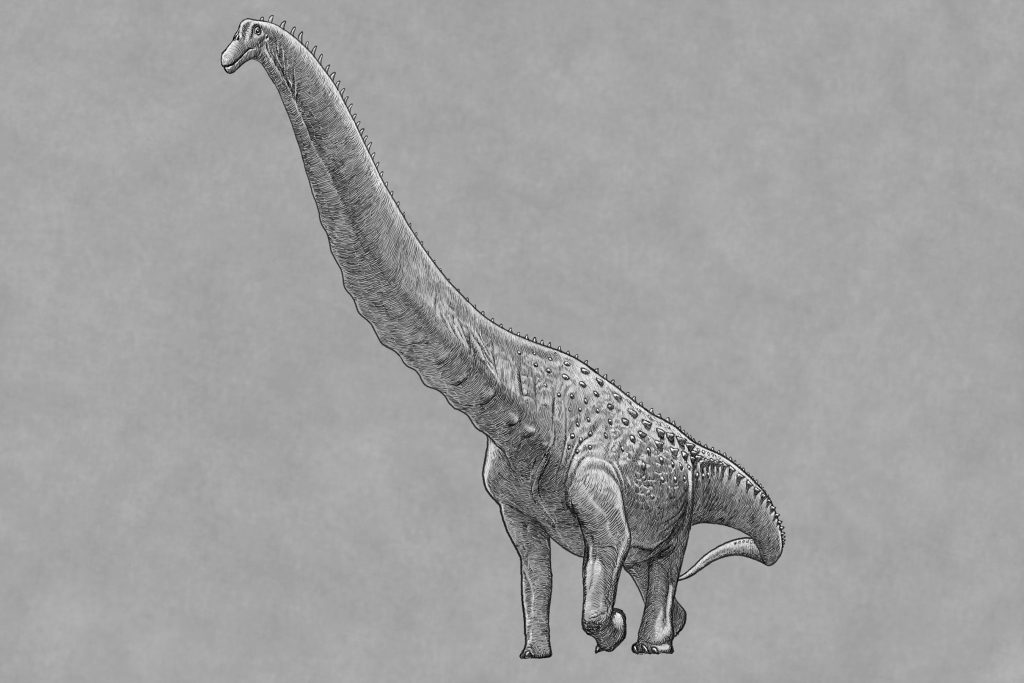
Alamosaurus sanjuanensis was 70 to 80 ft. whose thigh bones were as big as a man’s body. Dr. Wann Langston, Jr. found the thigh fossil in 1973 at Big Bend National Park in Texas. This titanosaur sauropod had about the same mass as a blue whale with a long neck, a tiny head, columns for limbs, and a long tail for counterbalance. Their brain was the smallest in brain/body ratio of other dinosaurs so probably not Einsteins in their ecosystem. There is a shortage of head fossils for this behemoth most likely because the head was portable.
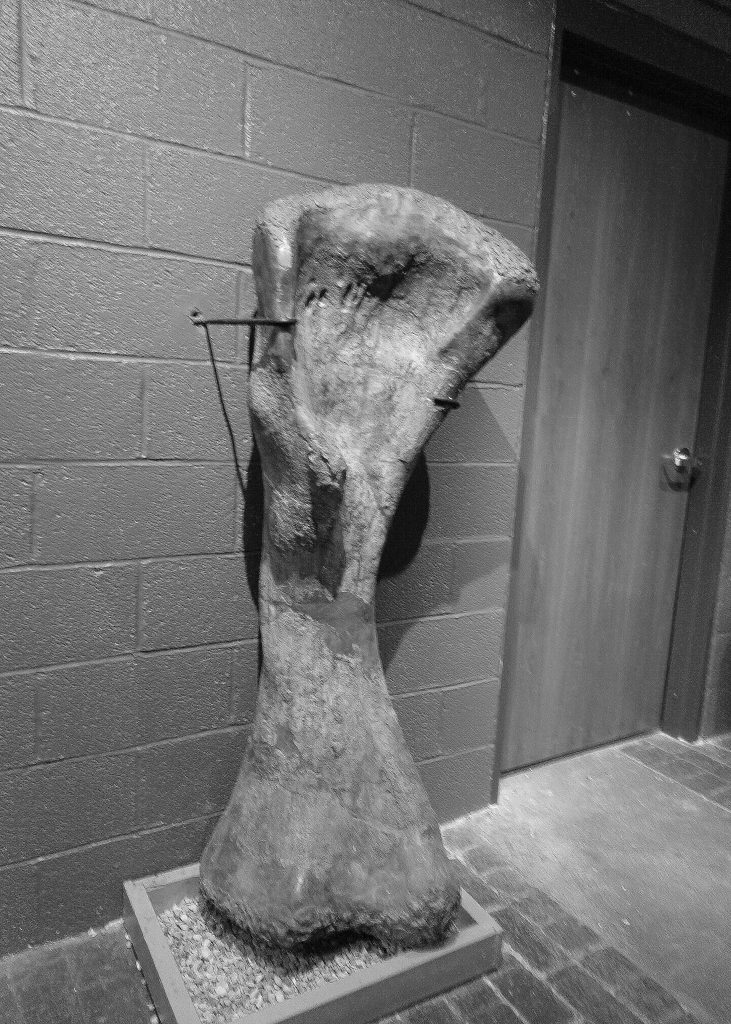
Alamosaurus sanjuanensis was first found in the Ojo Alamo Formation named after a nearby trading post in San Juan, New Mexico. “Alamo” means cottonwood in Spanish, a tree that is prevalent around creeks. “ensis” means from or belongs to.
These sauropods were thought to have been extinct since the early Cretaceous, but they were plentiful in the North American southwest in time for the extinction event. They are supposed to be the largest animals to ever walk the Earth- 10 times larger than an African elephant.
As herbivores, they ate from the 75- to 160-foot trees chewing with their small, blunt teeth that they would crop and stip tender leaves from the trees and swallow them whole. Scientists have found polished rocks called gastroliths in the gizzard area of the body. The rocks were used to digest tough vegetation like chickens do now.
More coming soon. Please check back.
